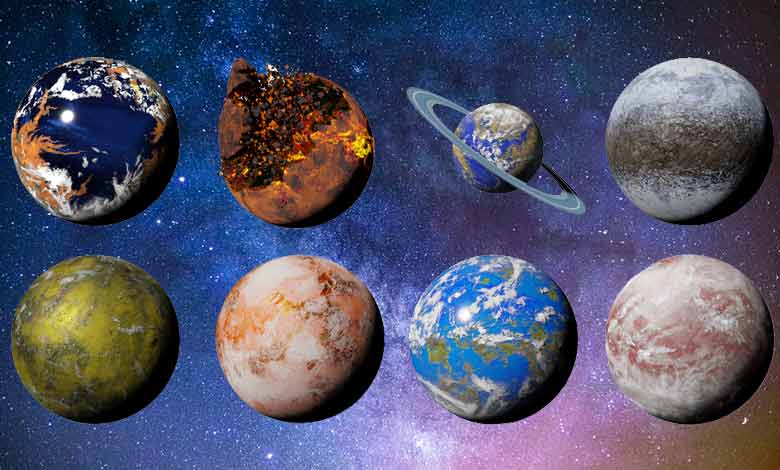
Which planets might support life? The first step to finding life in our galaxy is locating exoplanets that orbit other stars. But once we find them, how can we tell if they can support life? The Trappist one system has seven earth-sized planets, three in the habitable zone. The Hubble Space Telescope can tell whether these planets have hydrogen-rich atmospheres like icy gaseous Neptune or atmospheres more like rocky Earth. We need to use spectroscopy to measure the planet’s composition and atmosphere.
Astronomers use spectroscopy to sort light into its very specific components. The different chemicals and dust particles give off different telltale fingerprints. The Webb telescope has four spectrographs trained on a few lucky exoplanets.
Scientists will learn about the atmospheres of these planets by seeing their fingerprints as a shadow against their bright host star, similar to the transit technique. Life changed the earth’s atmosphere over time, increasing the oxygen and decreasing the methane. By taking a virtual sample of the atmosphere of these exoplanets, we can look for evidence of carbon dioxide, water vapor, and methane.
What are exoplanets?
An exoplanet is a planet outside the solar system orbiting another star. They’re also called extrasolar planets, and thousands of possible exoplanets have been found using ground-based and space-based telescopes. There are different types of exoplanets: The gas and ice giants. These exoplanets are similar to Jupiter, Saturn, Uranus, and Neptune. Around two-thirds of exoplanets discovered are either gas or ice giants.
- Hot Jupiters are planets similar to the mass of Jupiter but orbiting their parent star.
- Super Earth’s rocky planets with up to 10 times the mass of Earth.
- Culture planets orbit pulsars and future stars.
- Custodian planets were once gas giants whose atmosphere has been roasted away because they moved too close to their parent star and EXO Earth.
Planets with similar mass composition radius and atmosphere tumors orbit the habitable zone of their parent star. The habitable zone ranges from a star where liquid water can exist on a planet’s surface. This range depends on the size of the temperature of the star. The Trappist one planetary system comprises seven planets, of which five are similar to the size of the Earth, and two are between the size of Mars and Earth. Three of the planet’s orbits are within the habitable zone.
Which planets can support life? (Top 20 habitable planets)
Scientists are focusing on dwarf stars. They’re smaller and less luminous than the sun, but their lifespan can be between 20 and 70 billion years. This will give living organisms enough time to develop and evolve. Climactic conditions on super habitable planets will also be different.
The average temperature should be 8 degrees Fahrenheit higher than on Earth. There should be more water in clouds, liquid, and humidity. These conditions are the most favorable for biodiversity. So the whole planet would look like tropical forests on Earth. All 24 planets better than Earth are more than 100 light-years away from Earth.
Now let’s take a look at the potentially inhabited exoplanets.
1. Kepler 186f
Kepler 186f was discovered on April 17, 2014, by NASA’s Kepler spacecraft. It is in the Cygnus constellation and is approximately 582 light-years from Earth. With a radius similar to Earth’s, this exoplanet is one of five planets that orbit the red dwarf star. However, unlike the other planets in its system Kepler-186 B, C, D, and E. Kepler 186f resides at the proper distance from its Sun to maintain a temperature above zero degrees Celsius. It means that it could have water and could therefore support life.
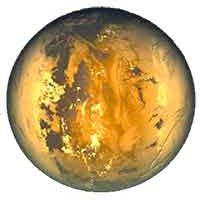
- One day on Kepler 186f could be the equivalent of weeks or months on Earth. However, it has some striking similarities to Earth due to its small axial tilt.
- It has seasons like Earth, and its seasons and climate are similar to Earth’s. So it was called one of the best planets for life in 2015.
- The gravity of Kepler 186f could be very similar to Earth’s.
Kepler 186f rotates much more slowly than Earth, so its day could be weeks or months long. It may be tidally locked, which means one side of the planet always faces its star, and the other is in constant darkness. Possibly, it has an atmosphere that can help keep the water liquid. That’s why scientists have described Kepler 186f as a cousin to Earth.
2. Gliese 581g
This controversial planet is known as Zarmina. However, its official name is Gliese 581g. This planet lives in the Libra constellation along with five other planets. Gliese 581g is the third planet from its host red dwarf star Gliese 581. It is relatively close to Earth at only 20.42 light-years away. In 2010, it was announced as the first potentially habitable planet.

- This planet has a similar mass and gravity to Earth’s and is located right in the middle of its system’s habitable zone.
- It also receives similar levels of sunshine as Earth.
- This planet is tidally locked with the Sun.
- A strong atmosphere on the planet could circulate the heat from the sunny side to the dark side, making it much more habitable.
- Water can exist there with at least one ocean.
- It is 1.5 times Earth’s size, with temperatures between negative 35 and 10 degrees Fahrenheit due to the weaker energy output from its small Sun.
Some scientists believe Gliese 581g has a 100% chance of supporting life. However, not all scientists agree. It has been surrounded by controversy since its discovery. The European Southern Observatory or the high-accuracy radial searcher has not yet confirmed the planet.
3. HD 85512 b
HD 85512b sits in the inner edge of its system habitable zone and is classified as a rocky earth-sized exoplanet. It is 36.2 light-years away from Earth. In 2011 it was called an up-and-coming candidate for supporting life. Its Sun is an orange dwarf star with about two-thirds the mass of Earth’s Sun. The planet is 3.6 times the size of Earth and was discovered by scientists from the University of Geneva. Also, it was discovered using High Accuracy Radial Velocity Planet Searcher (HARPS) short.
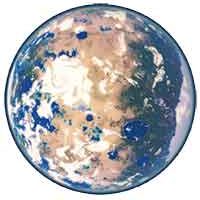
- Its orbit is 54 Earth days, and the temperature could be around 24.5 degrees Celsius.
- It’s the star, though. A K-type star may give off too much radiation evaporating the surface water on the planet.
Whether or not this planet has life is dependent on whether or not this planet has clouds. It would need 50% cloud coverage. Scientists believe radiation could be mitigated if the planet has enough cloud cover. The planet could have water and, therefore, could have life.
4. Gliese 667 Cc
Gliese 667 Cc was an exciting discovery called the most earth-like object known outside our solar system. It is found in a system with three stars, but Lisa 667 Cc orbits a red dwarf star called Lisa’s 667c. It is likely a rocky planet like Earth but is much closer to its star than Earth. However, Gliese is 667 cc’s Sun, which is much cooler than Earth’s. Although it is much closer to its host star, it is the right distance from its star to support life.
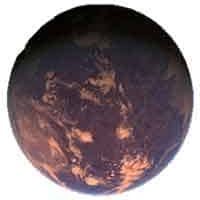
- Its orbit is 28 days meaning that a year on Gliese 667 Cc is 28 Earth days long.
- With an average temperature of 30 degrees Celsius, Gliese 667cc could support water.
- Gliese receives the 90% of the light of Earth. One side is shrouded in eternal darkness, while the other continuously faces the red dwarf.
Interestingly Gliese is 667 Cc and is so close to its Sun. Its Sun would appear 3 times larger in the sky than Earth’s. But at only 22 light-years away, any life on Gliese 667 Cc could see our Sun in the sky as a star. There is a probable chance of getting an area of suitable temperature between these hemispheres to support human life.
5. HD 40307 g
HD 40307 g was discovered on October 28, 2012, by a team of astronomers from both the universities of Hertfordshire & Godding Ham. It is classified as a super-earth and sits in the picture’s southern constellation.
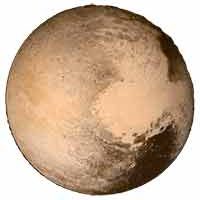
- HD 40307 g is the sixth and furthest planet from its host sun, HD 403o7.
- It is only 55.8 million miles from its host star, but its host star is considerably cooler than Earth’s, emitting 75% less energy.
In fact, the other five planets in HD 40307 g system are so close to their Sun that all five are closer than Mercury is to Earth’s Sun. However, its Sun is so much cooler than Earth’s. Also, HD 403o7 g is the right distance from its Sun to support life. More research on this Earth-like planet is needed, but HD 403o7g has many similarities to Earth. It is not tidally locked to rotate on an axis like Earth, meaning it has days and nights.
6. Tau Ceti F
Tau Ceti F is a recent discovery made in 2017. It is only 12 light-years away. Its host star Tau Ceti is visible to the naked eye from Earth. It sits in the Centas constellation, and its host star is the closest solitary G Class star found to date. This planet is similar in size and brightness to Earth’s star. Although there are four planets in its system, Tau Ceti F is the strongest candidate for life because of its distance from its star.
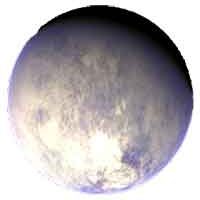
- Its orbit is also similar to Earth’s at one point seven Earth years.
Although promising, Tau Ceti F has one major obstacle in its possibility of supporting life. Its star Tau Ceti has a debris disc. This circumstellar disk, made up of dust and debris, orbits the star. Because of this, Tau Ceti F would likely experience many major impact events, including asteroids, meteorites, and comets. These impact events could impact the probability of life on this planet.
7. Kepler 442 b
Kepler 442 b orbits its host star kepler 442. It is about 12006 light-years away from Earth. It is classified as an Earth-sized exoplanet, a third larger than Earth. NASA’s Kepler mission first identified this planet. Also, its Sun, although similar to Earth’s, is smaller and cooler than Earth’s. Its orbit is 112 Earth days, but Kepler 442 B sits in a very habitable zone.
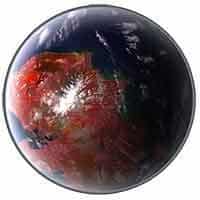
An article published in the Astrophysical Journal called The comparative habitability of Transiting Exoplanets called Kepler 440 is more habitable than Earth. Although little is known about this planet, it ranks higher on the habitability scale than Earth. There is a powerful possibility that Kepler 442 B supports life.
8. Ross 128 b
Ross 128 b was found on November 17th by Xavier. The planet was discovered by radial velocity, and Ross 128 B is the second-closest known exoplanet at only 11 light-years away. Sitting in the Virgo constellation, the discovery of Ross 128 b was both intriguing and exciting to astrobiologists. Ross 128 B has been called the most Earth-like planet ever found.
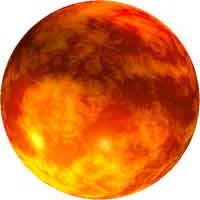
- Ross 128 b likely receives 38% more sunlight than Earth. It is also likely rocky like Earth and probably maintains a temperature of 21 degrees Celsius.
This makes it an excellent candidate for life as the probability of water on this planet is very high. Furthermore, Ross 128 B’s son is a quiet old red dwarf star that is stable and has limited solar activity. The only drawback is that Ross 128 B sits on the hot side of its habitable zone, meaning water may evaporate quicker on Ross 128 B than Earth.
9. Kepler-22b
Kepler-22b has so many similarities to Earth that it has been called one of the best planets for another Earth. In fact, Kepler 22b is the first habitable planet that the Kepler space telescope found. Kepler 22b sits in what is known as the Goldilocks zone of its system. It means that it is the perfect distance away from its host Sun. With a temperature of 22 degrees Celsius, the planet is not too hot so that water won’t evaporate and not too cold so that water won’t freeze.
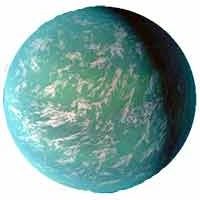
- Kepler 22b is double the size of Earth, but it has a rocky core like Earth. Potentially a very large ocean that could support life.
Furthermore, its Sun, Kepler-22, is a G Star Class Sun similar to Earth. Its orbit is also similar to Earth’s at 290 days. Kepler 22b is 600 light-years away and is in the Cygnus constellation. If something happens to the Earth, this water-rich planet is where we will probably move because it’s a prime contender for the next homeworld. When we arrive there in the future, there is a high possibility that many possible alien lives will encounter us. That may have evolved in the outer liquid layer.
10. Teegarden B
It’s an exoplanet that orbits a red dwarf star about 12 light-years from the solar system. Typically red dwarfs can emit flares that blow away the atmosphere of the planets in their orbit. But this host star is calm and relatively passive. Teegarden B has almost the same mass as the Earth. It makes a complete circle around its star in about five days. A year on Teegarden B is less than a week on Earth.
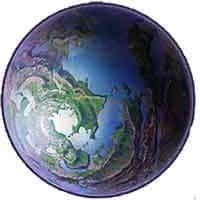
Astronomers say this planet has the greatest similarity to Earth out of any planet ever discovered. Despite not being in the solar system, the planet resembles planets in our solar system. The planet is slightly heavier than Earth, and it’s in a habitable zone where water can be liquid. The reason why this planet is named Teegarden B is that it’s nearby to the Teegarden Star. This star was discovered back in 2003, but the discovery of this exoplanet is recent.
- The planet has an earth-like radius, an earth-like composition, an iron core, and a rocky crust. It also has an ocean of water on its surface.
- It has a surface temperature environment of zero to 50 degrees Celsius, similar to Earth. That’s only slightly hotter than Earth, and the most normal temperature on this planet is 28 degrees centigrade.
Teegarden B’s star, Teegarden, is ten times lighter than Sun and classified as an old red dwarf. These smallest stars are roughly 8 billion years old and very difficult to research as they’re quite far away. But Teegarden B was given an Earth similarity index score of 0.9 v. To put that into perspective, one is Earth, so it only points five different from Earth on this scale.
11. Kepler-1638b
The furthest potential inhabited planet is Kepler 1638b. It’s in the constellation Cygnus, about 3 000 light-years away from earth. The super-earth class is twice as wide and four times as heavy as Earth.
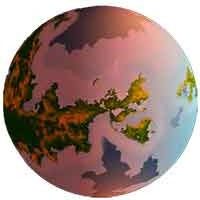
The gravity on it will feel much stronger. Even a normal jump will be much harder for you than on earth. Although if this planet is inhabited, local life is used to such conditions.
12. LHS 1140 B
This planet is very rocky and solid. Although its size is only 40 percent larger than the earth, it’s seven times as massive. It has a strong gravity of 3.25 G. On this planet, you’d barely be able to stand on your feet because of its large mass.
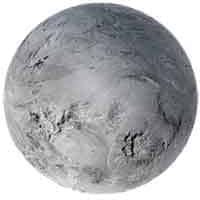
- It’s about 15% of the Sun’s mass, and as a red dwarf, any object orbiting around it.
- It is probably in a tidal lock.
This planet has a thicker atmosphere, and its temperature can be above 19 degrees Fahrenheit because of the greenhouse effect. It rotates around its star quickly, making a full circle in 24 days.
13. Trappist-1
It is an ultracold dwarf, a small planet that orbits in its habitable zone. It’s three times lighter than the earth. Its temperature is similar to earth’s, but the gravity is half as weak.
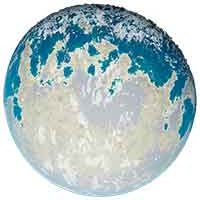
- It is a red dwarf star a bit under 40 light-years away from earth.
- It burns very coolly, with a surface temperature of about 2,500 Kelvin, or less than half as hot as our sun.
Trappist-1 is barely bigger than the planet Jupiter, although much more massive since Jupiter is predominately made of gas. It is almost identical to earth in mass though slightly larger, and orbits less than two million kilometers from its star.
14. Kepler-452 B
Kepler-452b was first discovered in July 2015, an exoplanet known as super-earth. Moreover, it is around five times the mass of Earth. It completes a full orbit in 385 days. Due to its large size, it has twice the earth’s gravity and receives more sun energy making it hotter. Still, it’s a good candidate for hosting life if we can reach Kepler 452b.
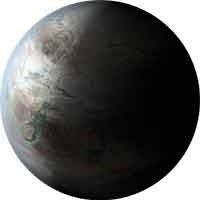
- The host star is only 11 percent older than the sun and is almost 2 billion years older. The exoplanet is 6.5 billion years old compared to 4.5 billion of earth.
Unfortunately, the planet is 45,000 light-years away. If we travel in a spaceship at 37,000 miles per hour, 26 million years are needed to get there. Then cryogenic preservation and age-reversing agents will be mandatory requirements for this journey. Although four or five mirrors earth, it is highly susceptible to the greenhouse effect. So it could become a giant ball of hot death when we arrive there.
15. Proxima Centauri B
Proxima Centauri B is the nearest Earth-like planet discovered to date. Its home constellation Centaurus is only 4.2 light-years away from Earth. The planet was found by Doppel spectroscopy. Its star Proxima Centauri is an M-type red dwarf star and is the closest star to our solar system. Although the planet could support life, it is an M-type star and likely experiences many flares. It would also likely experience a lot of intense solar winds and radiation.
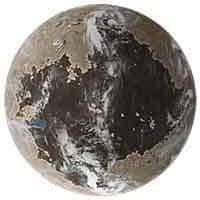
The biggest hurdle to the possibility of life on this planet is its star’s instability. Furthermore, M Stars start very hotly. Many drinks of water would have evaporated in the early years of this planet’s existence. However, it is possible that Proxima Centauri B started with a lot more water than earth did. Therefore still has water. Although Proxima Centauri is the closest star to the sun, we can’t see it with the naked eye because it’s too dim.
16. Kepler-438 b
Kepler 438B was first discovered in 2015 and located 470 light-years from Earth. Kepler 438B was deemed one of the most Earth-like planets ever discovered due to its Earth’s similarity index or ESI, which is 88% similar to earth. Hence that makes a suitable candidate for the potential of life. Kepler-438 b is 12% larger and receives 40% more light than the earth.

But still, it’s missing some necessary qualities for habitation, such as it doesn’t have a proper atmosphere and the planet nearby star emits flares 10 times more powerful than our Sun. This planet might be the second option if it has a magnetic field like earth.
17. Kepler-62f
This planet is also known as Super-earth and was discovered in April 2013. Kepler-62f is situated in the habitable zone of a seven billion-year-old star. Earth’s similarity index is 0.67 and is 1.4 times Earth’s, slightly smaller and cooler than Sun. Unfortunately, this rocky planet is an earth-like Waterworld containing oceans and ice. Either way, this planet is an excellent candidate for alien life and feasible for hosting human life.
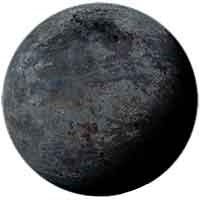
- It takes 267 days to complete a full orbit around its Sun and receives 41% of the sunlight compared to earth.
However, the planet might be tidally locked in orbit, which means one side faces the hot Sun while the other will be in complete darkness. So humans can only survive at the border between light and dark areas where the temperature suits life.
18. Kepler-62e
It’s 1.6 times larger than Earth, has a rocky surface with a high probability of water, and may be covered with oceans. The distance from earth is one year, 122 days long, and 1,200 light-years. All planets in this list are larger than Earth. They are called super-Earths, which means they are larger than our planet.
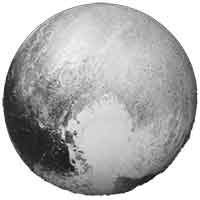
It would have similar characteristics to an exoplanet: Cloudy sky, warm and humid everywhere other than the polar caps. Its stellar flux is 20% more than earth enough to trigger a runaway greenhouse effect, decreasing the chance of habitability.
19. Kepler 69c
Kepler 69c is an exoplanet found orbiting in the Kepler 69 system, located around 2400 light-years from Earth. The planet is likely rocky and super-earth because its mass and dammit earth are way bigger. The planet’s discovery was announced on the 13th of April, 2013.

NASA’s Kepler observed over 50 thousand stars, including Kepler 69, which was made between May 2009 and March 2012. It was observed that Kepler 69c orbited its star every 242 days. The conclusion which they could have only been responsible by a planetary body. There have been different thoughts on whether the planet is a super-earth, this habitable, or super Venus.
- The surface temperature is around 275 degrees, is over 6 times the mass of the earth, and is close to twice the earth’s radius.
When the planet was discovered, scientists considered the likelihood of water or even an ocean being on the planet. The planet orbited a habitable zone where liquid water could form. However, further investigation showed that the planet should be categorized under Venus. The host star has around 80 percent of our sun’s luminosity. The distance of Kepler 69 c to its stars is 64% compared to the Earth’s distance to the Sun.
Researchers for the planet are too close to harbor life in it. The planet would be at the edge of a habitable zone even if it could. A runaway greenhouse effect on the planet’s surface from a high Estela flux would cause the oceans to boil. The surface temperature would rise to over 227 degrees because vapor would have submerged the atmosphere, part of the important component that makes up greenhouse gases.
20. Mars
Humans have limited time and technology to find a suitable home planet far away from us. It makes sense to look next door. Mars could be the next permanent home for us. We may be able to see it happen in our lifetime. This red planet could be a great candidate for life with its ancient water-rich soil, sufficient sunlight, and a similar day length. That is only 40 minutes longer than Earth.
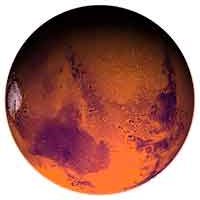
- Mars’s gravity is 38% weaker than the Earth’s but still within the acceptable range for survival.
There are high chances of successfully tearing for Mars because its thin atmosphere, which protects the planet from the sun’s radiation, could hold oxygen and become breathable. SpaceX is training astronaut settlers to colonize Mars, with the first group blasting off in 2031. We could see homes on Mars very soon.
How can we live on other planets?
Scientists have recently found we are in the habitable zone of their host stars theory. We can colonize them and make them suitable for human life in the future. Modern rockets can fly at five times the speed of sound. Even at such speeds, it will take us more than one hundred thousand years to get to Proxima Centauri.
We must develop something faster to travel to a new home on one of these exoplanets. Perhaps scientists already have the answer: warp drive. This is a piece of technology that will allow us to manipulate space and time. It creates a bubble where the normal laws of motion don’t work. So the spacecraft will be able to exceed the speed of light significantly. Humanity already has such technology, although in theory yet.
Since no object with mass can travel at the speed of light, we need to do one trick. The spacecraft has to move by compressing the space in front of it and expanding it behind it. Thus, the ship moves, and the space-time inside this warp drive bubble. The maximum speed can be ten times that of light. But to warp space-time, the ship must be enormous. It will need the amount of energy close to what the whole planet of Jupiter generates to power.
Still, recent NASA jet propulsion lab calculations showed that the ring around the ship should create the so-called warp field. It shouldn’t be perfectly round as it was thought before. It can be more donut-shaped. This will greatly simplify the design and construction and make it possible to test this technology on a spacecraft the size of a Voyager 1 Pro. Though it still seems impossible, scientists already say there is hope and don’t know what technology will be used.
In 2069 NASA plans to launch its first interstellar mission to explore potentially habitable planets outside the solar system. Various rumors say that the speed of light can be achieved with laser technology. If the probe is tiny, it can be launched to the Alpha Centauri star at almost the speed of light. There are also two other alternatives to power spaceships. These are nuclear energy and energy from matter and anti-matter collisions. These technologies are still a mystery to humanity, though.
More Articles:
The Expansion Theory Of The Universe
References:
“The Habitable Exoplanets Catalog.” Planetary Habitability Laboratory. University of Puerto Rico at Arecibo.
Khodachenko M, “What makes a planet habitable?”
Schulze-Makuch, “In Search for a Planet Better than Earth: Top Contenders for a Superhabitable World.”
“The Goldilocks Zone.” NASA.
Overbye, “Far-Off Planets Like the Earth Dot the Galaxy.”
Petigura, Erik A, “Prevalence of Earth-size planets orbiting Sun-like stars.”
Khan, Amina, “Milky Way may host billions of Earth-size planets.”
Yeung, Jessie. “Our galaxy holds at least 300 million potentially habitable planets, NASA finds”.
“How many habitable planets are out there?”.
Preprint accepted by The Astronomical Journal: Bryson, Steve; Kunimoto, Michelle; Kopparapu, Ravi K.
LePage, Andrew, “A Review of the Best Habitable Planet Candidates.”
Table of Contents

